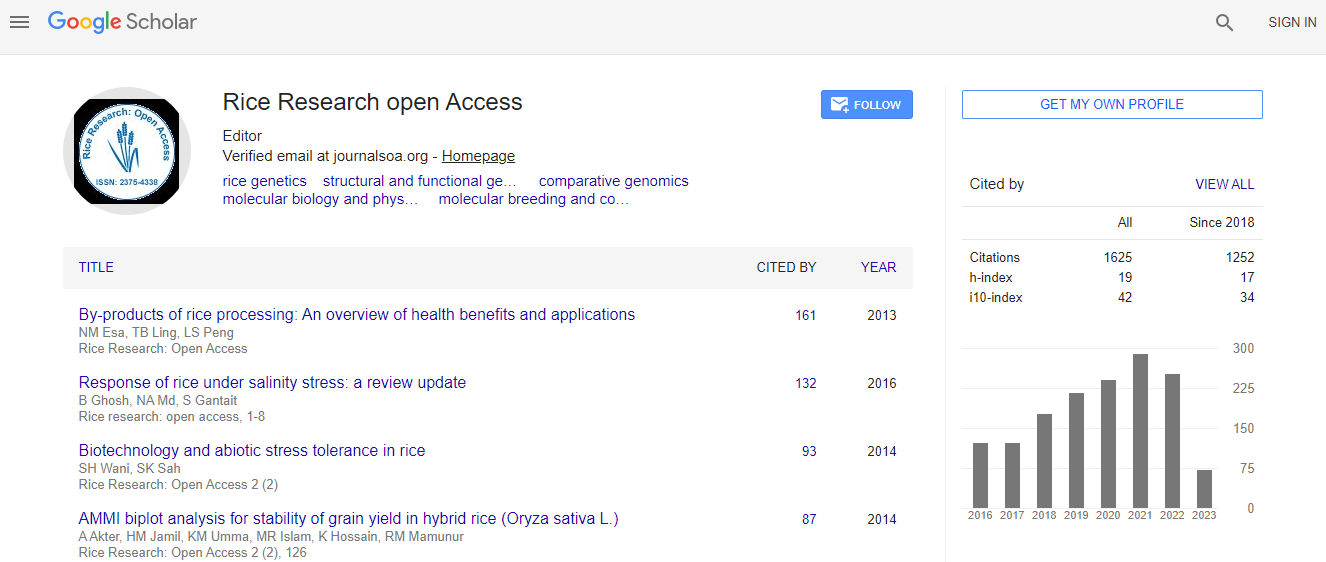Research Article
Assessment of Seedling Growth of Deepwater Rice Genotypes under Osmotic Stress Condition
Emam Ahmed MM1, Haque MM1*, Arif Hasan Khan Robin ABM2, Hossain MA2 and Biswash MR3
1Plant Breeding Division, Bangladesh Rice Research Institute, Gazipur 1701, Bangladesh
2Department of Genetics and Plant Breeding, Bangladesh Agricultural University, Mymensingh 2202, Bangladesh
3Adaptive Research Division, Bangladesh Rice Research Institute, Gazipur 1701, Bangladesh
- Corresponding Author:
- Md. Maksudul Haque
Scientific Officer (Golden Rice), Plant Breeding Division, Bangladesh Rice Research Institute, Gazipur 1701, Bangladesh
Tel: +8801723778056
E-mail: maksudulhq@gmail.com
Received Date: April 14, 2016; Accepted Date: August 18, 2016; Published Date: August 25, 2016
Citation: Emam-Ahmed MM, Haque MM, Robin AHN, Hossain MA, Biswash MR (2016) Assessment of Seedling Growth of Deepwater Rice Genotypes under Osmotic Stress Condition. J Rice Res 4:173. doi: 10.4172/2375-4338.1000173
Copyright: © 2016 Emam-Ahmed MM, et al. This is an open-access article distributed under the terms of the Creative Commons Attribution License, which permits unrestricted use, distribution, and reproduction in any medium, provided the original author and source are credited.
Abstract
The experiment was conducted to study the early establishment osmotic stress of advanced deep water rice. Severe parameters such as percent germination, seedling height, and number of leaves, leaf length, node length, and root length were studied for in vitro study. This study was conducted by MS medium supplemented with two treatments of PEG (1% and 5% PEG) and control (0% PEG). For percent germination, Bazail, HBJ.A.IV, and Birpala showed better performance with control (0%) but Gabura and Lalkhama performed better in both T1 (1% PEG) and T2 ( 5% PEG). The genotype Gabura showed more seedling height under control and HBJ.A.IV with T1 and T2. At 5% PEG, more number of leaves was found in BR5915-B-7, Gabura and Lalkhama. HBJ.A.IV and Lalkhama showed more leaf length and node length at T2. The genotype BR224-2B-2-5 was best and control and T1. But Birpala showed more root length at T2. The information generated in this study indicated that there is a close relationship between in vitro studies for the growth performance of the rice genotypes although significant variation was observed within the genotypes. Finally, the advanced genotype BR224-2B-2-5 may be a good source to meet the future challenge.

 Spanish
Spanish  Chinese
Chinese  Russian
Russian  German
German  French
French  Japanese
Japanese  Portuguese
Portuguese  Hindi
Hindi 
